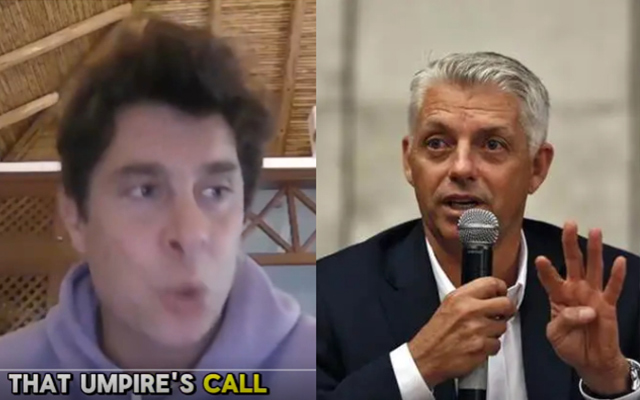Hawk-Eye founder Paul Hawkins gives his verdict after Ben Stokes' call: Should 'Umpire's Call' be abolished?
Paul Hawkins, the founder of the ball-tracking technology Hawk-Eye, has provided his insights into the rationale behind introducing 'umpire's call' in DRS's LBW reviews.
3 Min Read


In the game of cricket, where the slightest of margins can sway the course of a match, the advent of technology has significantly altered the dynamics of decision-making. One such innovation, Hawk-Eye, revolutionized the sport by introducing a method to scrutinize close calls, particularly in LBW decisions.
However, amidst the reliance on this technology, a questionable element persists, which is the 'umpire's call'. Paul Hawkins, the founder of the ball-tracking technology Hawk-Eye, has provided insight into the rationale behind introducing 'umpire's call' in DRS LBW reviews.
The recent India versus England Test series has reignited the debate surrounding the efficacy of the 'umpire's call'. A pivotal LBW decision against Joe Root in Ranchi sparked controversy, highlighting the contentious nature of this review protocol. The debatable LBW dismissal of Zak Crawley in the Rajkot Test sparked England captain Ben Stokes to call for abolishing the 'umpire's call' protocol.
Also read: KL Rahul ruled out of Dharamsala Test, Jasprit Bumrah returns
We are a lot, lot more accurate than the size of the umpire’s call area: Hawkins
Furthermore, Paul Hawkins explained that the umpire's call was originally conceived when implementing DRS to reassure umpires that technology would only overturn big errors, not nit-pick decisions. Interestingly enough, he also revealed that the 'umpire's call' phenomenon was evaluated in a similar mode as compared to the umpires at the international level.
“The reason the 'umpire’s call' started was David Richardson had the job when he was in charge of the ICC of bringing in DRS, And so, the original 'umpire’s call' areas were modelled the way that umpires were evaluated at the international level. So if they’d have gotten an LBW wrong, they had that margin of error of what the original 'umpire’s call' was for whether they get marked out for doing it or not. So that was the starting point because it was a good way to sell it to the umpires,” Hawkins said while speaking on The Analyst Show.
Should ‘Umpires Call’ be abolished? (@benstokes38 suggested it should.) Here’s the founder of HawkEye Paul Hawkins take on it. Listen to the full podcast here https://t.co/yHQ6qjlWeu #indveng #cricket pic.twitter.com/gFE3vzv17i
— simon hughes (@theanalyst) February 29, 2024
Besides, Paul Hawkins clarified the technology itself is much more accurate than the 'umpire's call' margin. He suggested that starting from scratch, the umpire's call may not have been introduced at all.
"We are a lot, lot more accurate than the size of the umpire’s call area. If you start from scratch [with technology], is there a reason for the umpire’s call? Probably not. In most other sports, it would be a definitive it’s out or not out,” he added.
Also read: Hawk-Eye founder Paul Hawkins defends DRS decision for Joe Root's dismissal in Ranchi Test
“[The Root LBW] would have been clearer on TV if the track had come off the ball, which happens automatically if the ball does pitch outside leg stump. But unfortunately, since this had just pitched in line, the track is still relevant for whether it went on to hit the stumps, so the track stayed on the ball," while speaking about Root's dismissal he said.
Download Our App